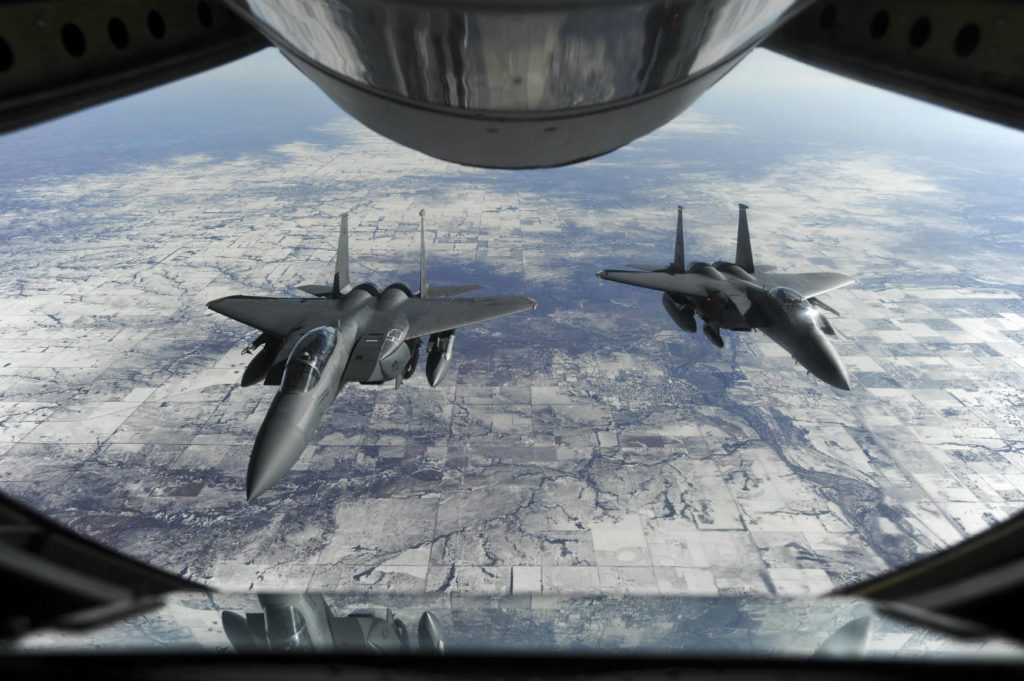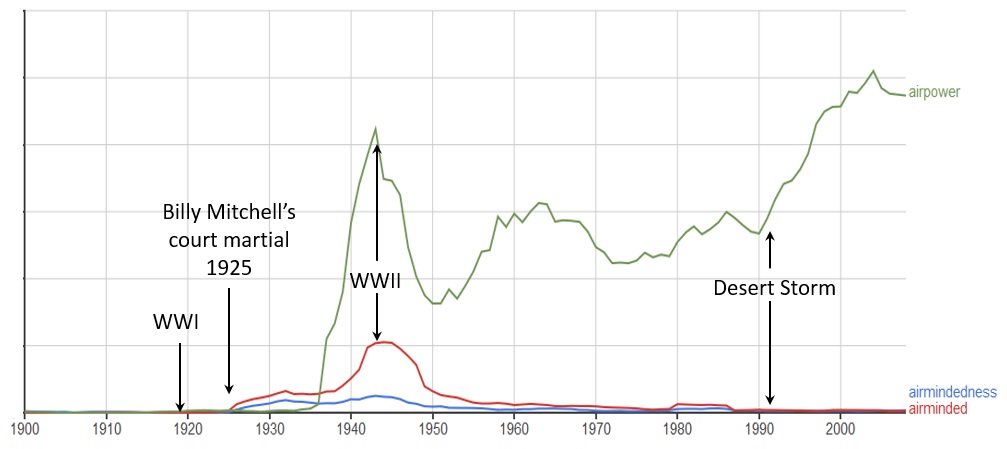Air-Mindedness 2.0: We Need to Do Better Than “Fly, Fight, and Win”

“We are on a lifelong journey to develop our character. Sometimes we get focused on reputation. As we move through the ranks, we confuse character and reputation. Character is who we are every day and what we do when no one is watching. Reputation is what people think of us after watching us for a period of time. We need to focus on the first and the second will take care of itself.”
Chief of Staff of the Air Force David L. Goldfein
While the above quote referenced an individual’s preparedness for future conflict, it can easily be related to the U.S. Air Force’s organizational culture. This lens is especially fitting given the new leadership focus on revitalizing the squadron as the core of the Air Force — the warfighters who made the service what it is today.
Since the first military plane was bought by the U.S. Army Signal Corps in 1909, the U.S. military has debated what to do with airplanes and which service should control them. Today, there are still advocates that claim the Air Force should never have left the Army to become a separate branch. While this topic typically comes up as an emotional argument about close air support, at its core, the issue is really about how airpower is viewed and integrated into the joint force. This isn’t a snake oil sermon about how airpower will solve every problem in the world; it’s about what airpower actually is. And this isn’t even about how the other services view airpower — a large part of the issue today lies within the Air Force itself.
What Would You Say You Do Here?
Ask a soldier what the Army mission is: “to fight and win our nation’s wars, by providing prompt, sustained, land dominance.” The Navy mission is to “maintain, train and equip combat-ready naval forces capable of winning wars, deterring aggression and maintaining freedom of the seas.” Every marine learns that the Marine Corps mission is amphibious employment and it is engrained that it serves as a “force in readiness.” Now, the Air Force mission: “Fly, Fight, and Win.”
Fly, fight, and win? This is a motto befitting a recruiting commercial, not a mission statement for a military organization. A quick search turns up more confusion. There are officially five core Air Force missions: (1) air and space superiority; (2) intelligence, surveillance, and reconnaissance (ISR); (3) rapid global mobility; (4) global strike; and (5) command and control. Yet this list doesn’t describe the purpose of the Air Force, just functions. Individually, looking into the mission of these functions simply produces more sub-mottos (“Rapid Global Mobility…Delivery on Demand,” “Air and Space Superiority…Freedom from Attack and the Freedom to Attack,” etc.). Then there’s yet another catchphrase that describes the effects of Air Force missions: “Global Vigilance, Global Reach, and Global Power for America.” Last but not least, there’s the motivational tagline, “the world’s greatest Air Force — powered by Airmen, fueled by innovation.” Just sifting through the propaganda attempting to match mission mottos to organizations can be overwhelming and feels a bit narcissistic compared to the other branches of the military. How can such a tech-savvy service filled with brilliant minds fail to pen a simple mission statement? This is but a symptom, not the root cause.
Air-Mindedness 2.0
As the U.S. Air Force begins to grasp at terms and ideals to modernize under the premise of the third offset strategy, this deliberate evolution of airpower must be built on an equally deliberate foundation of air-mindedness. “Air-mindedness” is a perplexing and somewhat odd term that is not as familiar today as it used to be, but it possesses unrealized potential that has been forgotten. In the context of Gen. Goldfein’s opening quote, if airpower is reputation, then air-mindedness is character.
The term air-mindedness dates back to World War I, when visionary people began to see the potential for airplanes and the military power they could project. With the rise of the U.S. Army Air Forces in World War II and the subsequent creation of the Air Force as independent branch after the war, “air-mindedness” has slowly been replaced with “airpower” in our parlance. But air-mindedness and airpower are not synonymous. It seems as if the U.S. Air Force has gotten exponentially better at delivering and touting airpower’s reputation, but may have lost the “why” in the process — the conceptual understanding of air-mindedness.

A conundrum of sorts, the reference of air-mindedness to a vast and unbounded realm also eludes any accurate definition being bestowed upon it. Today’s Air Force is vastly different than airpower advocate Billy Mitchell fought for almost a century ago, but one basic element remains true: The context of air-mindedness depends on the perspective of the airman. Trying to create a definition that encompasses the wide range of today’s interdependent functions dilutes the word to become almost meaningless to all but the few academically astute. Ironically, this paradox actually describes the “power of airpower” by conceding that it is not even easily codified in words, let alone in action. Is airpower defined by its input, medium, output, or simply by virtue of the uniform worn by airmen? The past decade has matured the space and cyber domains to the point that it’s time to re-address the foundation of what the service is charged to do for its country, much as Billy Mitchell and Hap Arnold did three-quarters of a century ago — air-mindedness 2.0 seems most appropriate.
Quantifying the Domains
Instead of thinking in terms of air, space, and cyberspace, it’s easier to comprehend air-mindedness (and thus airpower) by instead thinking of it as what I propose be called high-dimensional operations (HDO). In the literal sense, air and space domains reside above the traditional land and sea; figuratively, cyber exists on a higher cognitive level. Individually, these three domains have unique attributes:
Air is transitory and ephemeral, requiring a continuous stream of resources
Space is perpetual and rhythmic, a cumulative multi-agency satellite constellation
Cyber is ominent, something that is both ominous and imminent
Charging the Air Force with the responsibility to “flight, fight, and win” in these domains is a joint endeavor — to think otherwise is blissfully ignorant. Today’s U.S. Air Force has only 59 percent of U.S. military fighters (air superiority), 51 percent of all U.S. government-owned satellites (space superiority), and less than a third of the cyberspace force (cyber superiority). Finally, the service must embrace its role as the preeminent responsibility of U.S. nuclear deterrence capability — something lacking from its mission statement altogether.
Technology continues to improve complementary and even cross-domain capabilities to unprecedented integration. To make this even more complicated, evolution of warfare today has pushed all branches of the services into various elements of air, space, and cyberspace. Collectively, airpower should be thought of as the output of the cumulative input from all domains of warfare: land, sea, air, space, and cyber (and potentially soon the electromagnetic spectrum).
Pushing Forward
“Airpower” should be considered a term retained for heritage rather than a connotation of capability. It’s time to think about airpower as trans-dimensional, uniquely multi-domainsional, and inherently joint. Accepting this, “air-mindedness” begins to reassume both task and purpose. The Air Force did not run away from home when it left the Army in 1947 — it grew up and moved out. It’s also outgrown its tagline and needs a mission statement befitting its role in national security.
Merging this intent with sister services’ mission statements, I offer the following as a new proposed U.S. Air Force mission statement: “to provide an agile global force capable of providing prompt, sustained, high-domain superiority to deter aggression and jointly win our nation’s wars.”
Maj. Mike “Pako” Benitez is an F-15E Strike Eagle Weapons Systems Officer with over 250 combat missions in the Air Force and Marine Corps. He is a graduate of the U.S. Air Force Weapons School and a former Defense Advanced Research Agency (DARPA) fellow. The views expressed are those of the author and do not necessarily reflect the official policy or position of the Department of the Air Force or the U.S. government.
Image: U.S. Air Force, by Airman 1st Class Aaron J. Jenne

